| Origem | Literatura Estrangeira |
|---|---|
| Quantidade de Páginas | 146 |
| Acabamento | Capa Comum |
| Autores | Cheryl Benard |
| Idioma | Inglês |
| Edição | 0 |
| Selo | Metis Analytics |
 Policing the Inner City in France, Britain, and the US
Policing the Inner City in France, Britain, and the US
Springer Nature
R$ 566,99 ou até 3x sem juros Kooperativer Föderalismus und Politikverflechtung
Kooperativer Föderalismus und Politikverflechtung
Springer Nature B.V.
R$ 348,54 ou até 3x sem juros Criminales de pensamiento
Criminales de pensamiento
Omnia Veritas Ltd
R$ 212,07 ou até 3x sem juros Open Marxism 4
Open Marxism 4
Pluto Books Ltd
R$ 284,52 ou até 3x sem juros The China Horizon
The China Horizon
World Scientific Publishing Co Pte Ltd
R$ 214,05 ou até 3x sem juros Open Marxism 3
Open Marxism 3
Pluto Books Ltd
R$ 303,10 ou até 3x sem juros Open Marxism 1
Open Marxism 1
Pluto Books Ltd
R$ 304,69 ou até 3x sem juros Moral Aspects of Economic Growth, and Other Essays
Moral Aspects of Economic Growth, and Other Essays
Longleaf Services on behalf of Cornell University
R$ 177,21 ou até 3x sem juros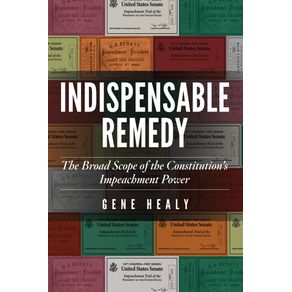 Indispensable Remedy
Indispensable Remedy
Cato Institute
R$ 103,12 ou até 2x sem juros Liberalism and the Social Problem
Liberalism and the Social Problem
Arc Manor
R$ 101,30 ou até 2x sem juros Instincts of the Herd in Peace and War
Instincts of the Herd in Peace and War
Suzeteo Enterprises
R$ 105,18 ou até 2x sem juros How to Save the Constitution
How to Save the Constitution
Izzard Ink,LLC
R$ 183,61 ou até 3x sem juros Practical Idealism
Practical Idealism
Omnia Veritas Ltd
R$ 189,80 ou até 3x sem juros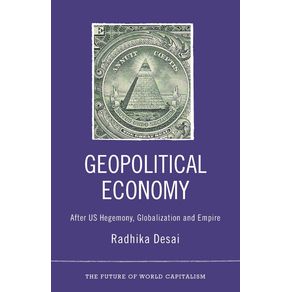 Geopolitical Economy
Geopolitical Economy
Pluto Books Ltd
R$ 319,74 ou até 3x sem juros Bolshevism
Bolshevism
Wellred
R$ 207,28 ou até 3x sem juros Ethnic Conflicts and the Nation-State
Ethnic Conflicts and the Nation-State
Springer Nature B.V.
R$ 459,09 ou até 3x sem juros Making Brazil Work
Making Brazil Work
Springer Nature B.V.
R$ 1.327,58 ou até 3x sem juros Kooperativer Föderalismus und Politikverflechtung
Kooperativer Föderalismus und Politikverflechtung
Springer Nature B.V.
R$ 348,54 ou até 3x sem juros The Politics of Evidence-Based Policy Making
The Politics of Evidence-Based Policy Making
Springer Nature B.V.
R$ 607,16 ou até 3x sem juros Red Star Over the Third World
Red Star Over the Third World
Pluto Books Ltd
R$ 179,08 ou até 3x sem juros Open Marxism 4
Open Marxism 4
Pluto Books Ltd
R$ 284,52 ou até 3x sem juros The China Horizon
The China Horizon
World Scientific Publishing Co Pte Ltd
R$ 214,05 ou até 3x sem juros Presstitutes Embedded in the Pay of the CIA
Presstitutes Embedded in the Pay of the CIA
Progressive Press
R$ 272,40 ou até 3x sem juros LImposture
LImposture
Salim Bouzekouk
R$ 110,26 ou até 2x sem juros Open Marxism 1
Open Marxism 1
Pluto Books Ltd
R$ 304,69 ou até 3x sem juros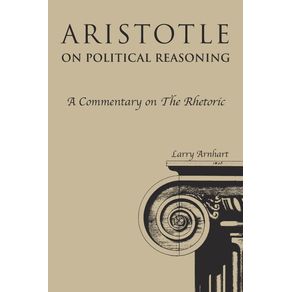 Aristotle on Political Reasoning
Aristotle on Political Reasoning
Longleaf Services on behalf of Cornell University
R$ 159,97 ou até 3x sem juros Indispensable Remedy
Indispensable Remedy
Cato Institute
R$ 103,12 ou até 2x sem juros The Elements of Politics
The Elements of Politics
Cosimo
R$ 287,56 ou até 3x sem juros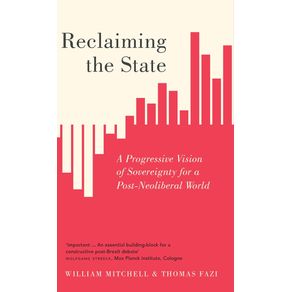 Reclaiming the State
Reclaiming the State
Pluto Books Ltd
R$ 798,87 ou até 3x sem juros Geopolitical Economy
Geopolitical Economy
Pluto Books Ltd
R$ 319,74 ou até 3x sem juros Making Brazil Work
Making Brazil Work
Springer Nature B.V.
R$ 1.327,58 ou até 3x sem juros Africa in Transformation
Africa in Transformation
Springer Nature B.V.
R$ 188,48 ou até 3x sem juros Kooperativer Föderalismus und Politikverflechtung
Kooperativer Föderalismus und Politikverflechtung
Springer Nature B.V.
R$ 348,54 ou até 3x sem juros Red Star Over the Third World
Red Star Over the Third World
Pluto Books Ltd
R$ 179,08 ou até 3x sem juros Brazil on the Global Stage
Brazil on the Global Stage
Springer Nature
R$ 900,32 ou até 3x sem juros Open Marxism 4
Open Marxism 4
Pluto Books Ltd
R$ 284,52 ou até 3x sem juros Presstitutes Embedded in the Pay of the CIA
Presstitutes Embedded in the Pay of the CIA
Progressive Press
R$ 272,40 ou até 3x sem juros LImposture
LImposture
Salim Bouzekouk
R$ 110,26 ou até 2x sem juros Language And Hegemony In Gramsci
Language And Hegemony In Gramsci
Pluto Books Ltd
R$ 261,88 ou até 3x sem juros Open Marxism 3
Open Marxism 3
Pluto Books Ltd
R$ 303,10 ou até 3x sem juros Powerless Science? Science and Politics in a Toxic World
Powerless Science? Science and Politics in a Toxic World
Berghahn Books
R$ 326,55 ou até 3x sem juros Aristotle on Political Reasoning
Aristotle on Political Reasoning
Longleaf Services on behalf of Cornell University
R$ 159,97 ou até 3x sem juros FREE MARKET REVOLUTION
FREE MARKET REVOLUTION
St. Martins Press-3PL
R$ 170,52 ou até 3x sem juros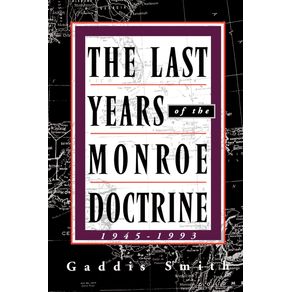 The Last Years of the Monroe Doctrine
The Last Years of the Monroe Doctrine
St. Martins Press-3PL
R$ 165,44 ou até 3x sem juros Instincts of the Herd in Peace and War
Instincts of the Herd in Peace and War
Suzeteo Enterprises
R$ 105,18 ou até 2x sem juros